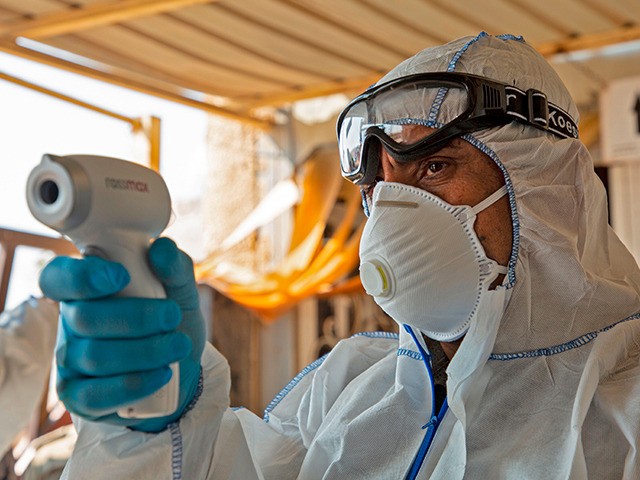The Iranian Health Ministry official in charge of Chinese coronavirus response, Iraj Harirchi, has tested positive for coronavirus himself, Tehran revealed on Tuesday.
Harirchi had last appeared in public on Monday refuting a claim by an Iranian lawmaker that officials in the capital were lying about the pervasiveness of the virus and that at least 50 people had already died, a significantly higher number than the eight deaths Iran had confirmed at the time.
According to the Associated Press, a spokesman for the Health Ministry confirmed on Tuesday the report that Harirchi was a confirmed coronavirus case. Harirchi had appeared in a press conference on Monday appearing somewhat sickly and reportedly uploaded a video in Farsi confirming that he had coronavirus to social media before the Iranian government officially confirmed it.
Iranian officials have not yet explained what Haririchi’s diagnosis means for the anti-coronavirus task force that he was running – if Harirchi will continue to oversee it while under quarantine or if the government will find a replacement. Coronavirus symptoms can vary from severe pneumonia and death to no symptoms at all, so it is possible that Harirchi feels healthy enough to continue working.
At Harirchi’s last public appearance, he denied allegations by Iranian Parliament member Ahmad Amirabadi Farhani that the Islamic regime is hiding the true number of coronavirus cases in the country. The lawmaker – from the city of Qom, where the virus first started spreading – accused the Iranian Health Ministry of not moving fast enough to contain cases of coronavirus or treat infected patients. He also claimed that hundreds of people are being screened as potential patients.
Reports from Iran indicated that Amirabadi also appeared ill in his last public appearance and officials in Parliament ordered him to return to Qom and isolate himself, as he could have potentially also been carrying coronavirus.
“This number [of 50 deaths] is false,” Harirchi said on Monday in response to Amirabadi’s claims. “This is not the time for political confrontations. … I say it here publicly that I will resign if the number of those who died in Qom due to this disease is half or even one-quarter of the number [provided by Amirabadi-Farahani].”
While Amirabadi suggests hundreds of Coronavirus cases in the country, the Health Ministry announced only 95 confirmed cases nationwide and 15 deaths since the first cases in Qom were identified publicly last week. Health Ministry spokesman Kianoush Jahanpour asserted that Tehran was prepared to combat the virus with 700,000 sanitation packs including disinfectant and sanitation masks.
The Iranian Ministry of Defense separately announced that the country had manufactured its own, independent coronavirus testing kits and that it had begun distributing them to health professionals on Tuesday. Iran’s military – and the Islamic Revolutionary Guard Corps (IRGC), a U.S.-designated terrorist organization – have begun attempting to wrestle control of coronavirus response out of the hands of the Health Ministry. IRGC Commander Hossein Salami asserted Monday that his terrorist network is ready to take action against the virus, in addition to the Defense Ministry’s declaration of developing new technology. The Foreign Ministry also announced several planned border closures to protect countries that have still not documented any cases.
“In the Army, we have facilities for combat in the real conditions, and we are also prepared to employ the Army’s domestic capacities at the macro level in this crisis, and to help the Health Ministry in quarantine (practices) or in training at the macro level if necessary,” Deputy Chief of Iran’s Army for Coordination Rear Admiral Habibollah Sayyari said in remarks Tuesday.
Iran still has not revealed if it has identified the first patient to bring coronavirus into the country or where the person came from.
At press time, the World Health Organization (WHO) has documented 80,238 cases of coronavirus in 34 countries (the WHO incorrectly does not deem Taiwan a sovereign nation, so the real number is 35). Of those, 2,700 have died, most of them in China. Every province of China has documented at least one case of coronavirus, though central Hubei, where Wuhan is located, has been most affected.

COMMENTS
Please let us know if you're having issues with commenting.